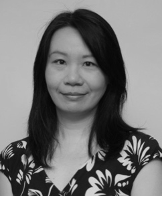LEUNG Wing Sze, Evelyn
University Scholars Programme (USP)
Wing Sze discusses the link between moral education and affective learning activities, and how they are integrated in her course to enhance student engagement and achieve cognitive learning outcomes.

While most of us believe in the significance of moral education, there may be less agreement on its place in higher education. One potential worry that colleagues may have concerns whether the intellectual integrity of the class will be compromised. In this post, I will explain why moral education is compatible with the achievement of cognitive learning outcomes.
Affective Learning Outcomes and Moral Education
At the core of what I view as moral education is the development of ethical values. In the taxonomy of educational objectives developed by Benjamin S. Bloom and his students, moral education can be classified under the affective domain, which eventually culminates in the organisation of values (Krathwohl et al., 1964). In their conception, cognitive activities are not only fundamentally united with affective activities, but also provide the necessary basis for affective learning outcomes. As shown in Table 1 which I reconstructed from their account, the activities in the cognitive outcomes column are closely related to activities in the affective outcomes column (Krathwohl et al., 1964, pp. 49-50).
Table 1
Alignment of cognitive activities with affective learning outcomes.
| Cognitive | Affective |
| Recall | Receive |
| Understand | Respond |
| Apply | Value |
| Analyse | Conceptualise |
| Synthesise | |
| Evaluate | Organise |
Reflection, Deliberation, and a Learning Community
In my course “Human Trafficking and Labour Migration”, I attempt to achieve affective learning outcomes by integrating both ethical theories and cases of human trafficking and labour migration. While actual cases in the literature provide students with concrete details, ethical theories give students the lenses to scrutinise and reflect on the happenings on the ground. Students read a small spectrum of theories, ranging from utilitarian accounts at one end to accounts of justice at the other, and deliberate on their strengths and weaknesses in class. They are expected to make use of these accounts to clarify their thoughts about the cases and by extension, about the nature of economic globalisation, of which the flow of low-skilled labour is only a part. In one of the classes, for instance, I asked students to utilise Iris Young’s account of structural injustice to explain the difficulties faced by low-skilled migrant workers. Students collaborated in small groups and creating mindmaps explaining these difficulties. One group turned in the following (Figure 1):

Making judgments about contested issues may not be the easiest; however, participating in a community of learners can help. Class discussions and peer reviews of paper drafts allow students to see the world from one another’s perspectives, modify their thoughts, and get accustomed to a mode of thinking that values accountability to others. For instance, in a reflection posted on the class blog, one student wrote:
“I started this unit on labour migration thinking that low-skilled foreign workers in Singapore were not exploited…However, as I learnt more concepts and facts about the issue, I realized that my original assumptions do not reflect the actual circumstances that the workers faced…While it is true that many foreign workers chose to work in Singapore, I did not consider that they would face a lot of obstacles if they wish to leave their employment in Singapore…While they indeed consented to work in Singapore, they lacked the bargaining power vis-à-vis their employer once they started working, making them vulnerable to exploitation by their employers. This observation weakens the grounds on which my original argument was based on, which in turn changes my views on the issue of labour migration in Singapore.”
Towards a Re-organisation of Values
Do my students become more just and compassionate towards vulnerable communities? I certainly hope so. I will dwell more deeply on this question in my upcoming write-up on the results of an educational research project funded by the NUS Teaching Enhancement Grant (TEG). Suffice it to say getting students to read, think, write, and discuss with one another is a very crucial first step. In this process, students can confront difficult and sensitive questions in an analytical and communal way, and because of that, personal growth and change can happen.
 |
LEUNG Wing Sze is a Senior Lecturer in the University Scholars Programme. She has recently been working on Jean-Jacques Rousseau’s educational treatise, Emile. One of her favourite teaching and learning quotes comes from Marian Wright Edelman’s The Measure of Our Success: A letter to My Children & Yours, where she writes: “Education is for improving the lives of others and for leaving your community and world better than you found it” (Edelman, 1992, pp. 9-10). Wing Sze can be reached at usplwse@nus.edu.sg. |
References
Krathwohl, D. R., Bloom, B. S., & Masia, B. B. (1964). Taxonomy of educational objectives: The classification of educational goals. Handbook II: Affective domain. David McKay, Inc.

